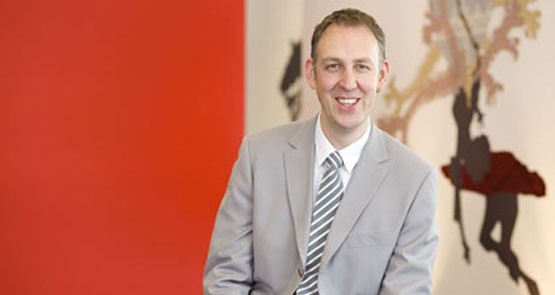
It’s been a tough summer for the arts in Australia, with many small companies still digesting the bad news that arrived in the bloodbath of the Australia Council’s December funding round.
But Australia Council boss Tony Grybowski has started the new year on the front foot. He’s given a lengthy interview to Matthew Westwood at the The Australian, defending the agency and its supine response to the mugging it received at the hands of former arts minister George Brandis.
The interview generated a bit of buzz for its admission that the Australia Council’s top executives, including Grybowski, were paid performance bonuses last year.
The news that Australia Council bureaucrats were awarded bonuses while the sector bled and the agency itself shed staff was greeted was greeted with weary cynicism by the sector. “Perhaps the council should give thought to the message this decision is sending to the arts sector,”ArtsPeak convenor Tamara Winikoff pointed out.
But there was one message that Grybowski sent during his interview with The Australian that intrigued close watchers of cultural policy.
That was his flat contradiction of testimony given to last year’s Senate inquiry by the executive director of the Ministry for the Arts, Sally Basser.
According to Westwood’s article:
“Grybowski rejects evidence given at the Senate inquiry by Sally Basser, executive director of the Ministry for the Arts, that the Australia Council had identified $8m as the amount that would reduce the impact on small-to-medium companies.
“’It wasn’t a figure that the Australia Council recommended,’ Grybowski says, adding that he argued the funding be returned in full. ‘We will continue to advocate for an increase in budgets.’”
Grybowski’s admission seems innocuous. But it hints at deep rifts between the Australia Council’s CEO and the Arts Ministry’s top bureaucrat. Grybowski appears to be contradicting evidence given by a senior public servant at a Senate hearing. Is the Australia Council’s boss saying that Basser gave the wrong information to a Senate inquiry?
The context here is the decision by Turnbull-appointed Arts Minister Mitch Fifield to return some of the money taken from the Australia Council by George Brandis in his ill-fated move to set up a National Program for Excellence in the Arts.
After Brandis was shuffled out of the portfolio by Malcolm Turnbull, Fifield decided to re-badge the Excellence fund with the moniker “Catalyst”. Instead of the $20 million a year to be given out by the Excellence fund, Catalyst would distribute only $12 million, with $8 million per annum returned to the Australia Council.
The figure of $8 million has always been a curious one. The funding cuts to the Australia Council are of course much more than this amount. There has never been an adequate explanation of why $8 million was the figure returned.
Where did the figure of $8 million come from? Why $8 million? Why not $10 million, or the full amount?
That question came up at the Senate inquiry in November, when Basser answered questions on the role of the Arts Ministry in setting up Catalyst. In an exchange with Labor’s Joe Judwig, Basser pins the figure of $8 million squarely on Grybowski and the Australia Council. She adds that that was the amount of money the Australia Council proposed to safeguard the small-to-medium sector — the big losers from last year’s arts funding merry-go-round.
Senator Ludwig: Where did the figure of $8 million come from?
Ms Basser : That was in consultation with the Australia Council.
Senator Ludwig: Who suggested it — the Australia Council?
Ms Basser : The Australia Council.
Senator Ludwig: By letter, email, roundtable discussion?
Ms Basser : In discussion was my understanding. I was present at a meeting where the Australia Council identified that number and I understand it was also suggested by them in a meeting with the Minister.
Senator Ludwig: The Minister just agreed that was a good number or did you do an analysis —
Ms Basser : He has been considering options. He was clearly consulting with the sector, with the Australia Council, with Creative Partnerships Australia and with a range of other people. People were putting a range of views.
Chair: How do they justify $8 million? How did they come up with that figure?
Ms Basser : You would need to ask —
Chair: The Australia Council?
Ms Basser : In detail, you would need to ask the Australia Council.
Chair: They were asked to come back to the Ministry with a figure?
Ms Basser : It was not quite like that. We were having a discussion about what would be a figure that would be enough to address this gap for the small-to-medium sector.
Chair: The Minister was never going to give it all back? He was prepared to give some back and they had to come up with a figure?
Ms Basser : No. As I have said, the Minister has been listening and talking to all stakeholders. Everything has been looked at, and that is where the landing point was.
Senator Singh: You or the Minister did not come up with that figure of $8 million?
Ms Basser : The $8 million was identified by the Australia Council as an amount that would address the issues and the gaps for the small-to-medium sector.
Basser’s testimony couldn’t be plainer, so it’s more than interesting that Grybowski has now chosen to contradict her. “It wasn’t a figure that the Australia Council recommended,” Grybowski told The Australian.
So who’s right?
If Grybowski is right, then a departmental secretary has given the wrong information to a Senate inquiry.
If Basser is right, then Grybowski has just verballed the executive director of the ministry to which he reports. That doesn’t augur well for the future of the Australia Council in the coming May budget — or for Grybowski’s career.
Ordinary artists trying to follow the verbal gymnastics can be forgiven for throwing their hands up in despair. While the Australia Council lays off staff and defunds small publishers and youth theatres, those at the top can’t even agree on who said what.








Where can I find a list of those companies that have been partly or fully defunded? Youth companies and small publishers have been mentioned a few times in a few Crikey articles but I must’ve missed the details.
The author did a fair amount of huffing and puffing; but what’s so unusual for those asked to reduce waste who succeed in doing so then receiving a performance bonus?
Bonuses? My clever son who works in the super sector tells me that he gets maybe a ten per cent bonus but that others in finance get 100% bonuses!
WFT is wrong with us allowing this bollocks?
ken svay, While I accept your assessment of your son’s status is genuine, aren’t you even a tad perplexed by the fact he can’t understand why he doesn’t earn as much as others? You do realise that simply dismissing it as “bollocks” isn’t an especially convincing ‘argument’, don’t you?
@Norman
Why should anyone get a performance bonus for merely doing the job that they are paid to do?